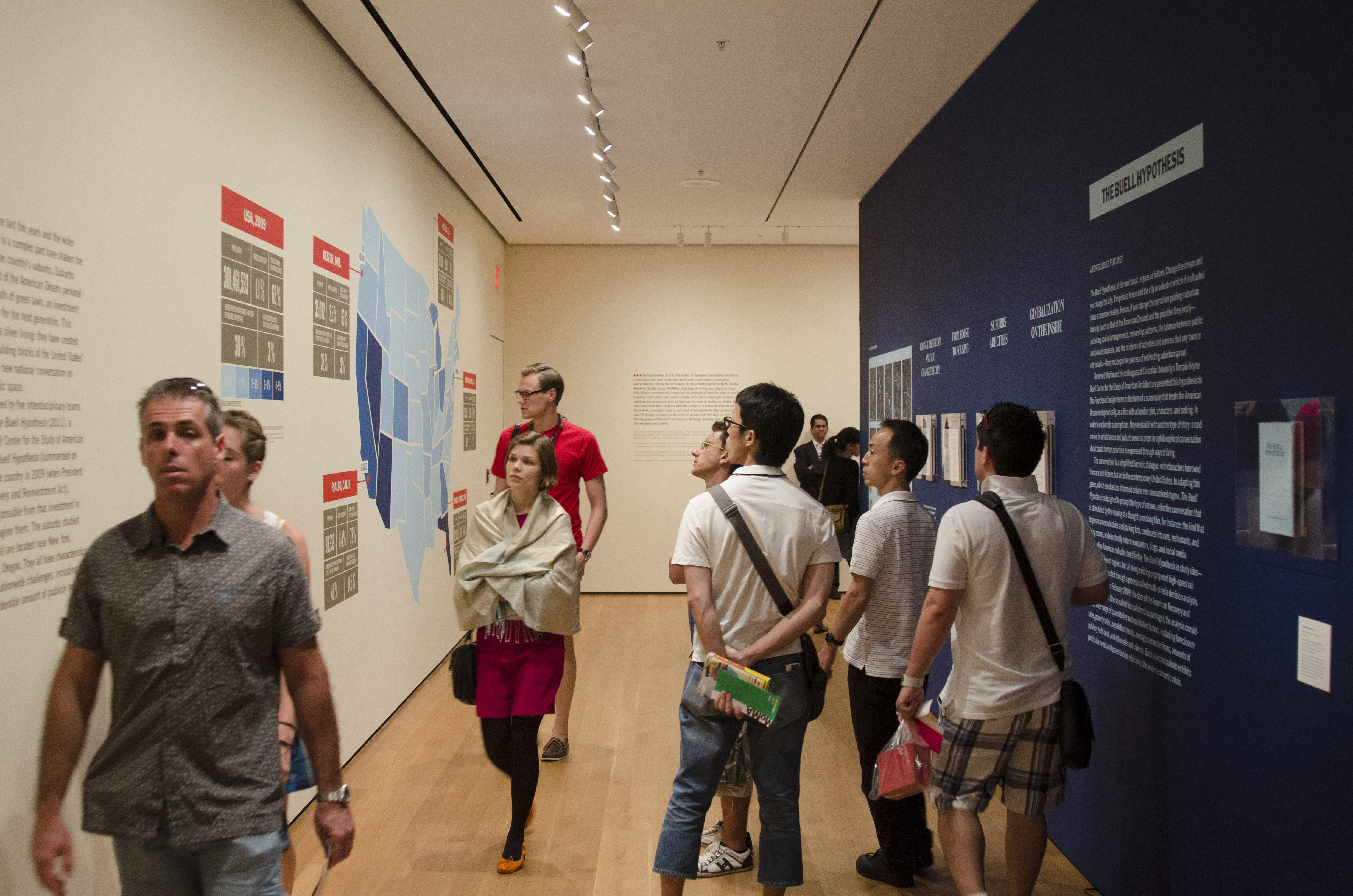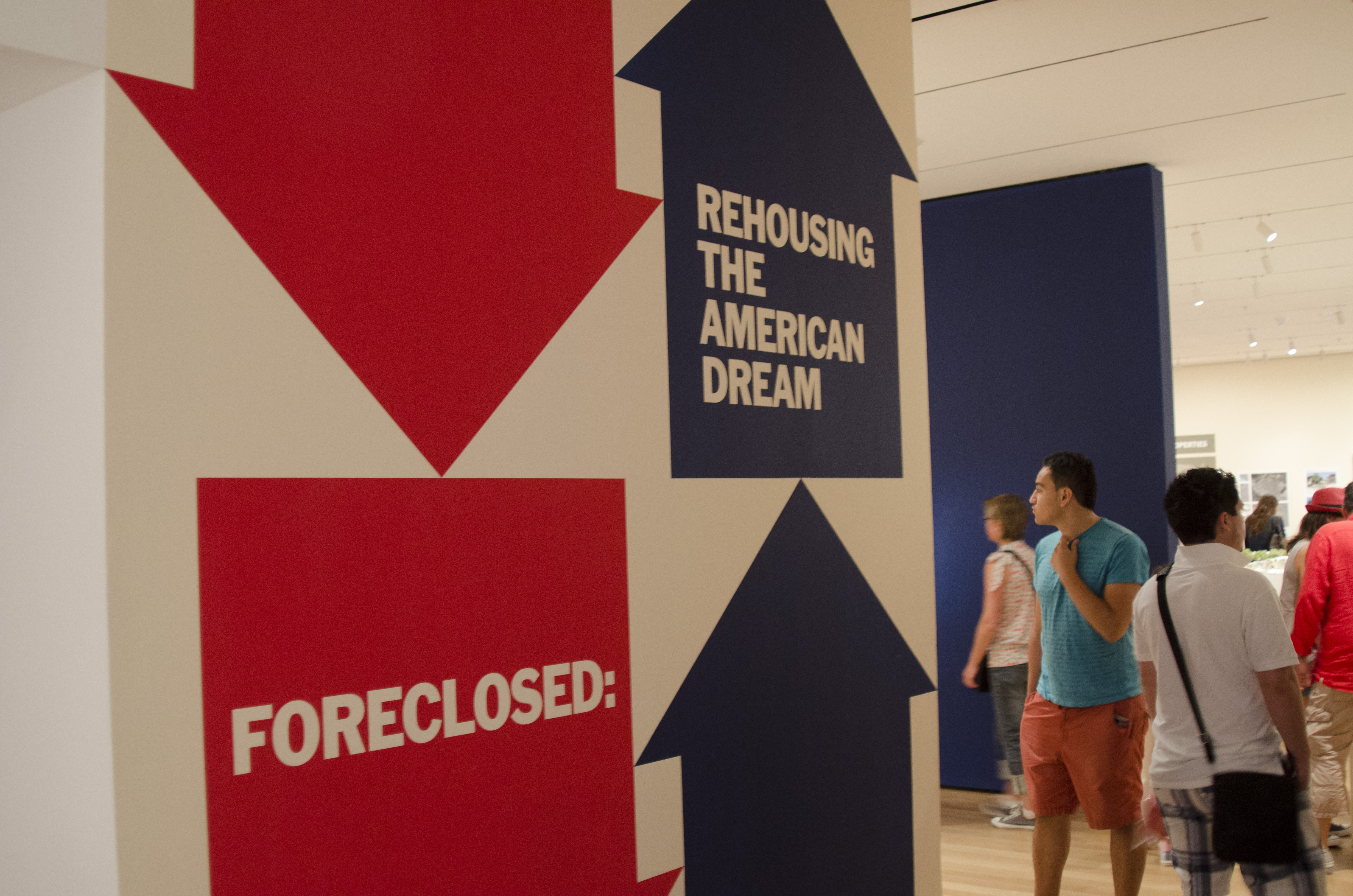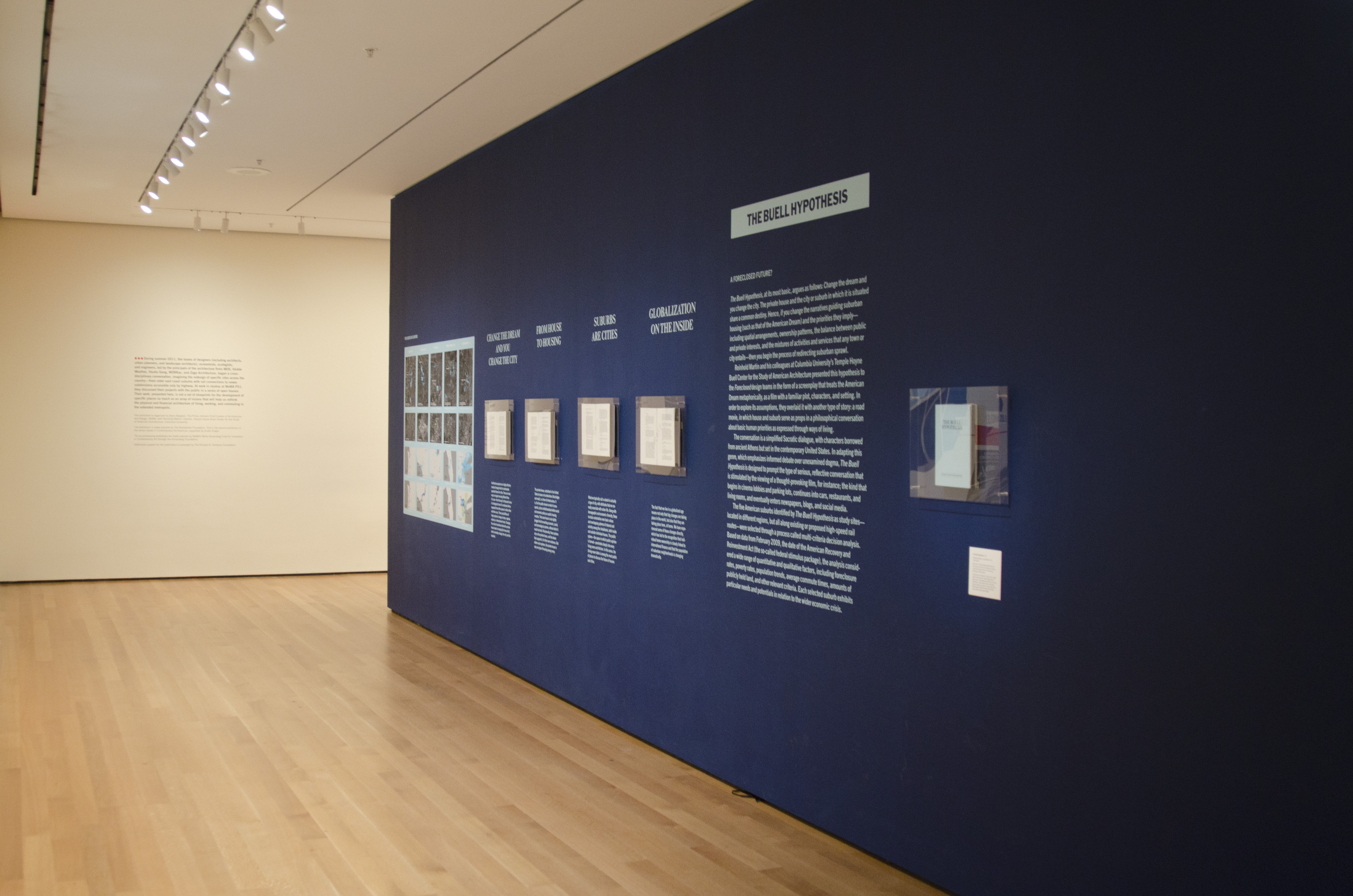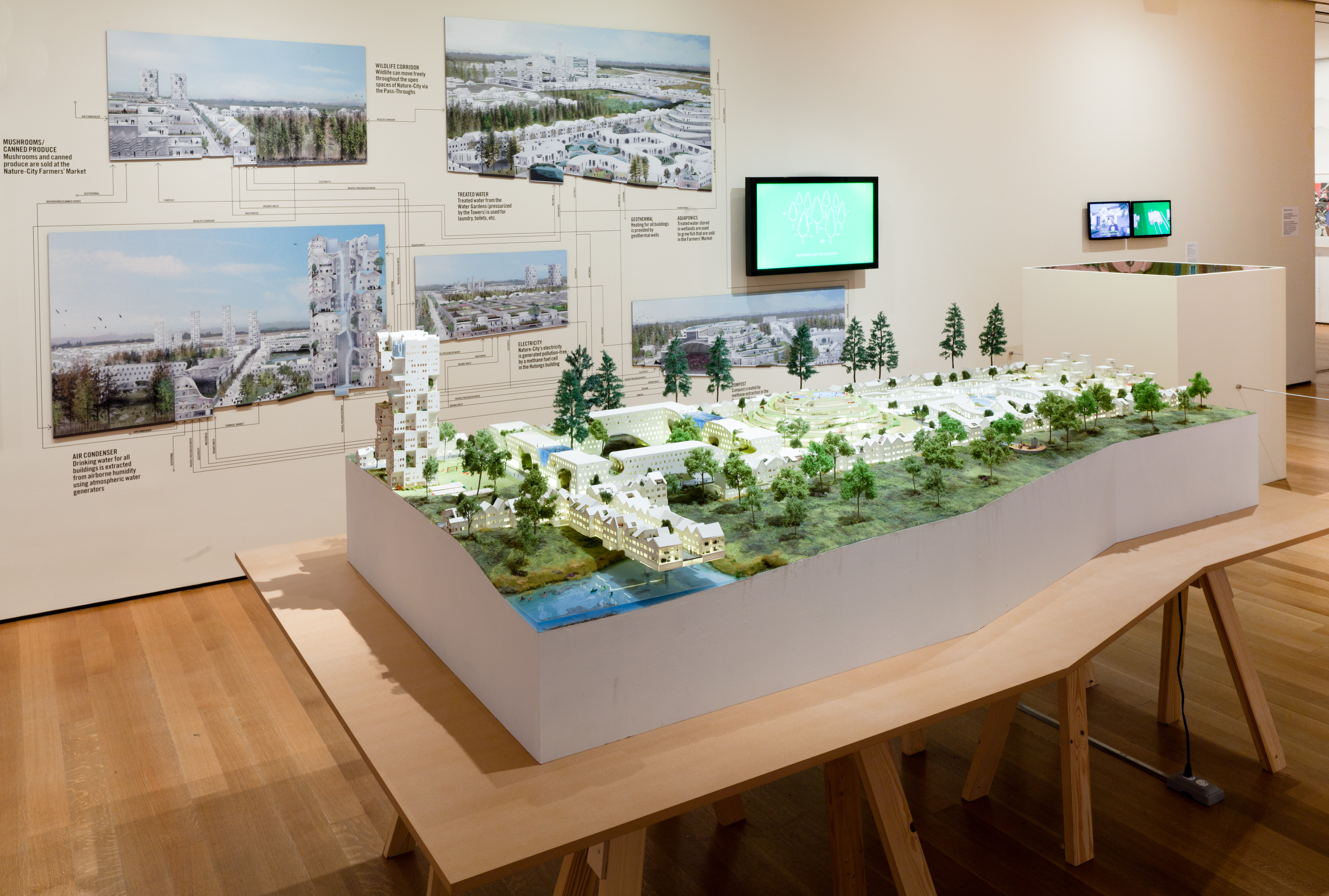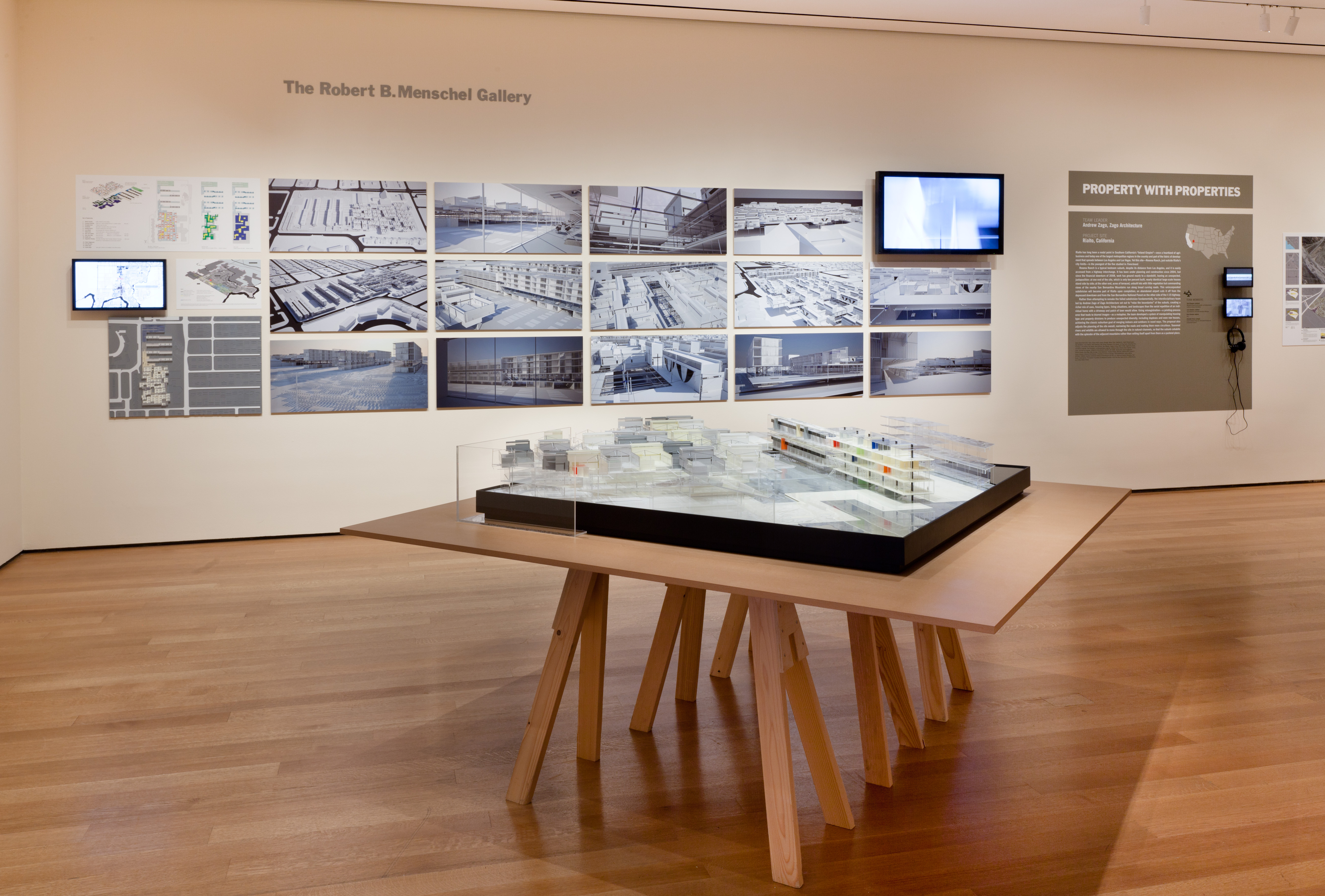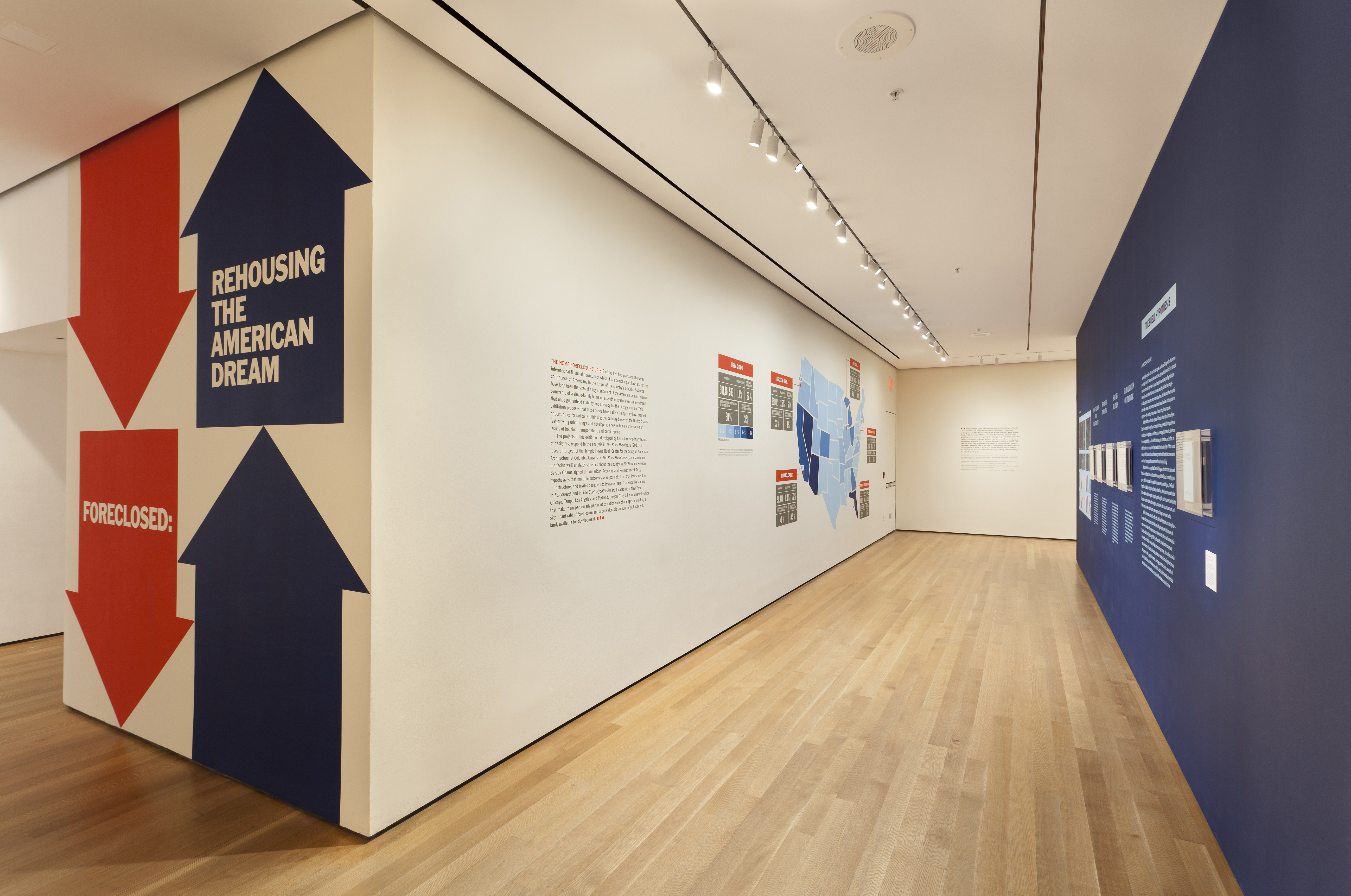
Foreclosed: Rehousing the American Dream
February, 2012–June, 2012
Organized by The Museum of Modern Art, New York
In association with The Temple Hoyne Buell Center for the Study of American Architecture
In the summer of 2011, together with the Temple Hoyne Buell Center for the Study of American Architecture at Columbia University, New York’s Museum of Modern Art invited five teams of architects, planners, ecologists, engineers, landscape designers, and other specialists in the urban and suburban condition to develop proposals for housing that would open new routes through the mortgage-foreclosure crisis that continues to afflict the United States. Establishing studios at MoMA PS1, the Museum’s Long Island City affiliate, the teams set out to imagine new models of housing, thinking not only of its physical form, but of the systems of infrastructure and finance that support it. Their focus was not the inner city but the suburbs, which are often passed over in the push of development toward an ever-more-distant periphery. Working with the findings of The Buell Hypothesis, a research report prepared by the Buell Center, each team focused on a specific town in one of five regions—the Northeast, the Southeast, the Midwest, the Pacific Northwest, and the Southwest—and each developed an inventive proposal, shown at the museum the following spring, that reimagined existing patterns of living, working, and home ownership.
